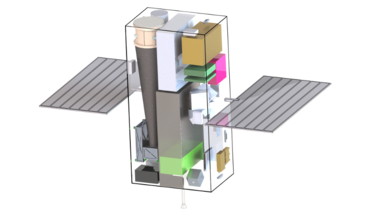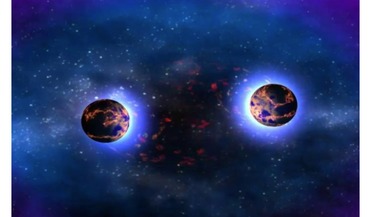 May 2018
PLATO the habitable zone explorer
May 2018
PLATO the habitable zone explorer
... two planets but they were not orbiting a star like our Sun. Instead they were orbiting a pulsar! Then, in 1995, the first exoplanet around a Sun-like star was discovered: 51 Pegasi b. By measuring the host...
 11 May 2018
Revolutionary X-Ray navigation system to be used on CubeSat mission
11 May 2018
Revolutionary X-Ray navigation system to be used on CubeSat mission
... regular intervals or pulses and in the case of millisecond pulsars, their pulse periods are in the range from one to ...! To put this into context, the first discovered millisecond pulsar was recorded as having a pulse period of 1.6 milliseconds....
 05 October 2016
Neutron star natal kicks could be the catalyst for binary formation and new gravitational wave sources
05 October 2016
Neutron star natal kicks could be the catalyst for binary formation and new gravitational wave sources
... (and other types of electromagnetic radiation) at rates of up to one thousand pulses per second. These are known as pulsars and studies of pulsars show that newly born neutron stars receive a large natal kick reaching up to ∼ 1, 500 kilometres per...
 February 2016
Defending Earth against cosmic hazards
February 2016
Defending Earth against cosmic hazards
... but by cosmic radiation originating from the nuclear reactions in stars, from novae and supernovae and even pulsars. Recent experience and scientific studies suggest there are dangers from cosmic radiation that truly need...
 March 2016
Why We Need Space Artists
March 2016
Why We Need Space Artists
... observing have not superseded but only provided much new material for space artists. Black holes, pulsars, quasars and hundreds of extrasolar planets; as each new space probe or satellite sends back its data, and...
 September 2016
URBOCOP: saving planet Earth
September 2016
URBOCOP: saving planet Earth
... of human activities and solar radiation on the Earth’s atmosphere. Cosmic rays from novas, supernovas and even pulsars. A potential danger of Earth being infected by microorganisms from inside meteors and other small celestial bodies that...